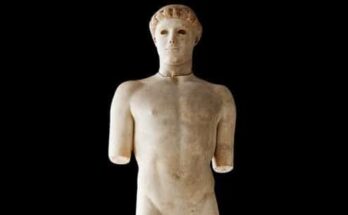Around 280 years ago, an assassin attempted to kill Bonnie Prince Charlie. He led a failed rebellion of Scots against the British in 1745. Recently, a musket ball hole was found in a bedroom wall at a historic Scottish site. This discovery proves the assassination attempt actually happened.
In April, volunteers working at Bannockburn House, located between Glasgow and Edinburgh, received an important tip. A relative of a former housekeeper mentioned a “secret panel” hidden beneath “delicate plaster work” with mermaid images and old wooden panels. The volunteers discovered the hole.
This hole is a clear sign of the assassination attempt on Bonnie Prince Charlie, as confirmed by a statement from Bannockburn House.
Catherine Bradley, the lead volunteer researcher at Bannockburn House, explained the discovery in a statement. “[We] noticed what appeared to be the edge of an inset panel in the wall when cleaning out the room furniture recently for conservation,” she said.
New research suggests Bonnie Prince Charlie may have narrowly escaped an assassination attempt in Bannockburn.
A musket ball hole has been discovered at Bannockburn House. pic.twitter.com/1wmefl7LkM
— CentralFM News (@CentralFMNews) July 23, 2024
“It is across from a window, now hidden by paneling later put in the room sometime in the 1880s…It was an exciting moment as I opened it. I carefully lifted the panel and saw the splintered wood and I knew we’d found something very special,” Catherine further added.
Bonnie Prince Charlie attempted to reacquire his father’s throne
The close call happened during the Jacobite Rebellion of 1745. Bonnie Prince Charlie, whose real name was Charles Edward Stuart, fought to get back the throne of his grandfather. His grandfather had lost the throne to his son-in-law during the Glorious Revolution of 1688. Unfortunately, the rebellion failed, and Stuart escaped to France.
Oral traditions have it that an unnamed assassin fired a shot through the first-floor bedroom window. The shot missed Bonnie Prince Charlie while he slept and lodged in the wall at the head of the bed, according to the statement.
For centuries, the “tantalizing legend” was passed down through generations, but no one knew if it was true, according to the statement.
Murray Cook, an archaeologist from Stirling Council who confirmed the hole’s authenticity, shared his thoughts. “I have visited the bedroom many times over the years and always tried to imagine the prince and the resulting confusion from the musket fire and sounds of smashing glass alerting everyone to the assassin.”
“However, to see the damage and to touch the spot sent a thrill down my spine,” Cook further added.
The discovery comes just in time for Stirling 900, a yearlong event marking 900 years since King David I made Stirling a royal burgh in 1124, Scene Stirling reported.



